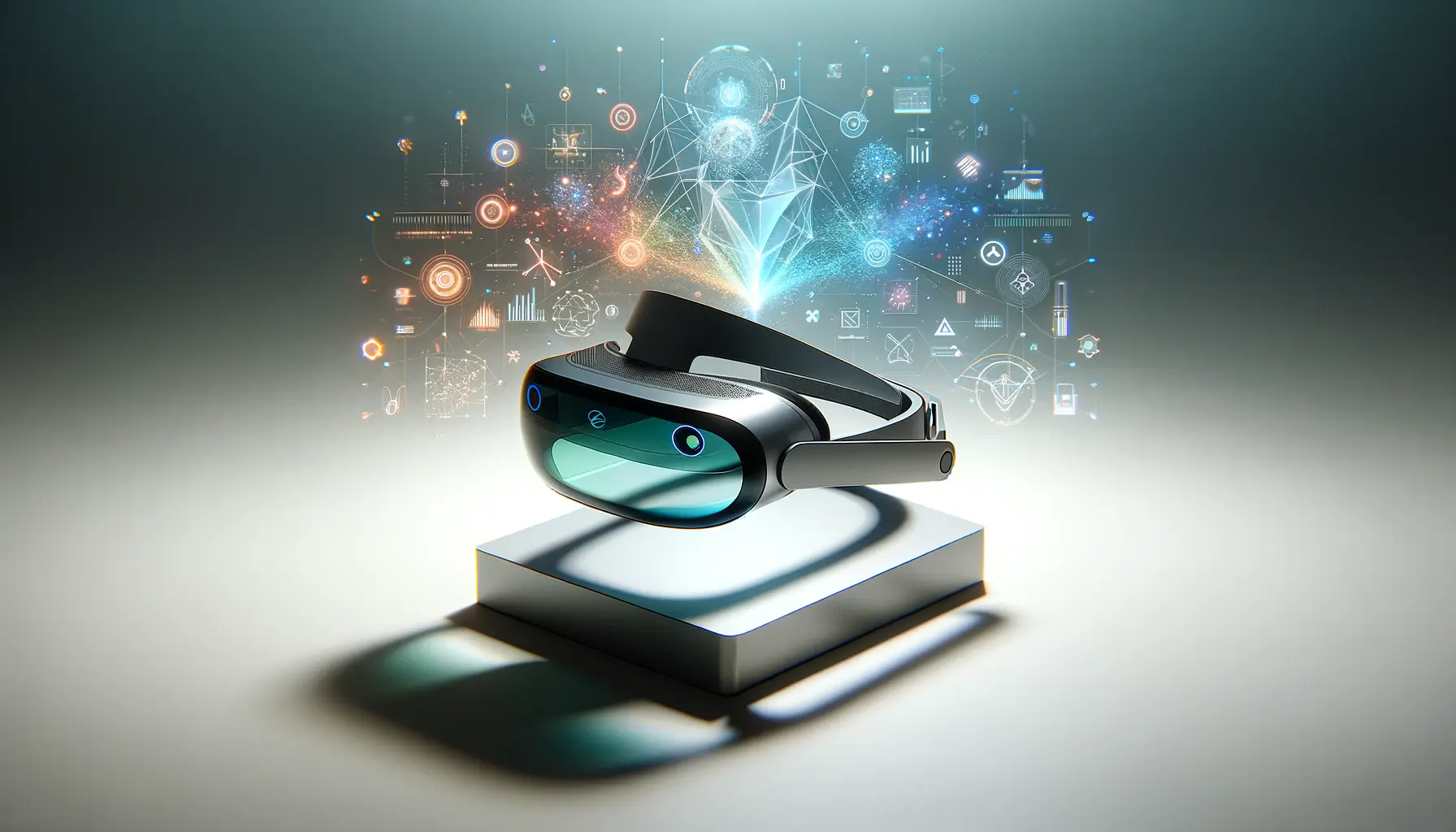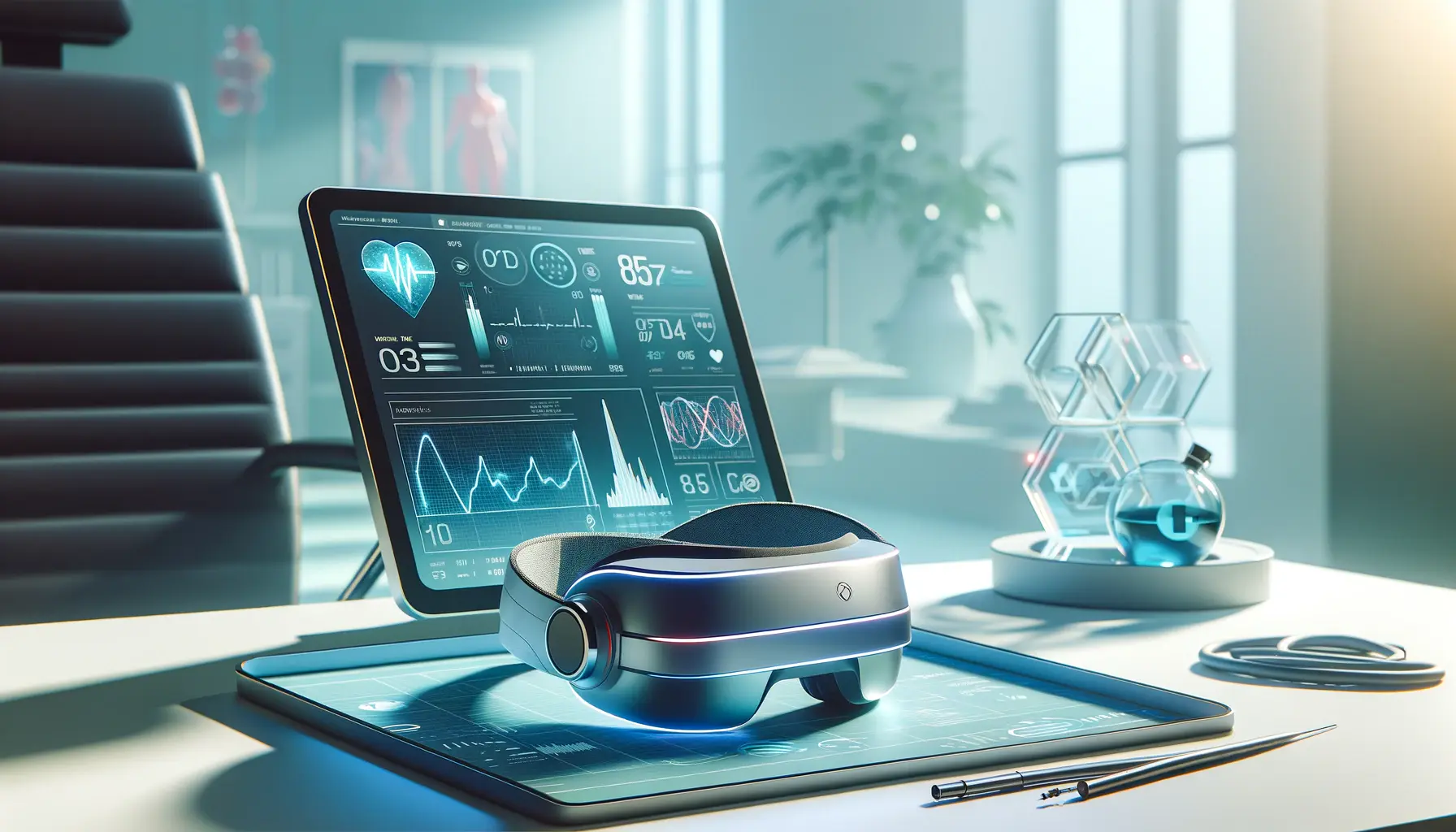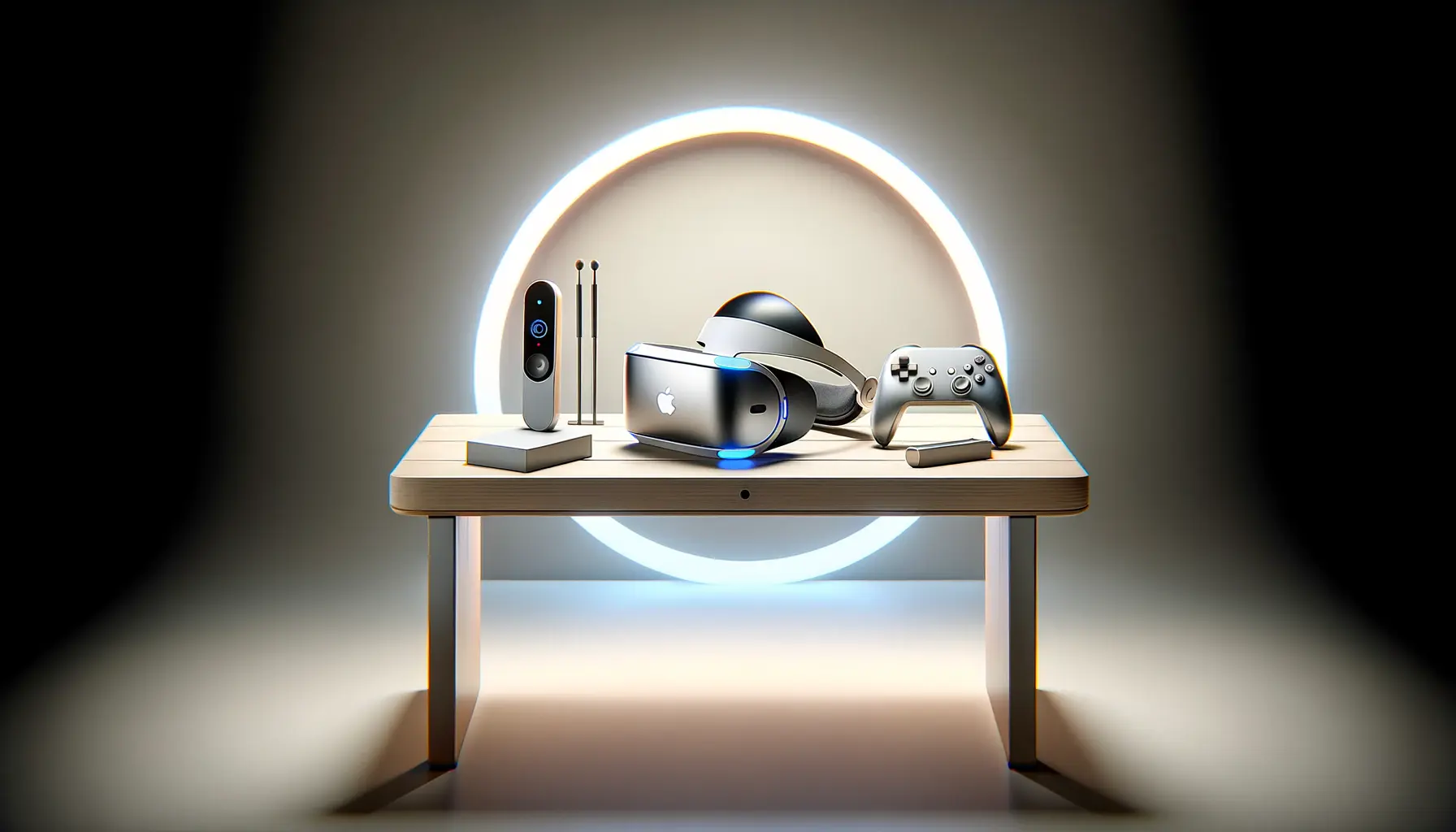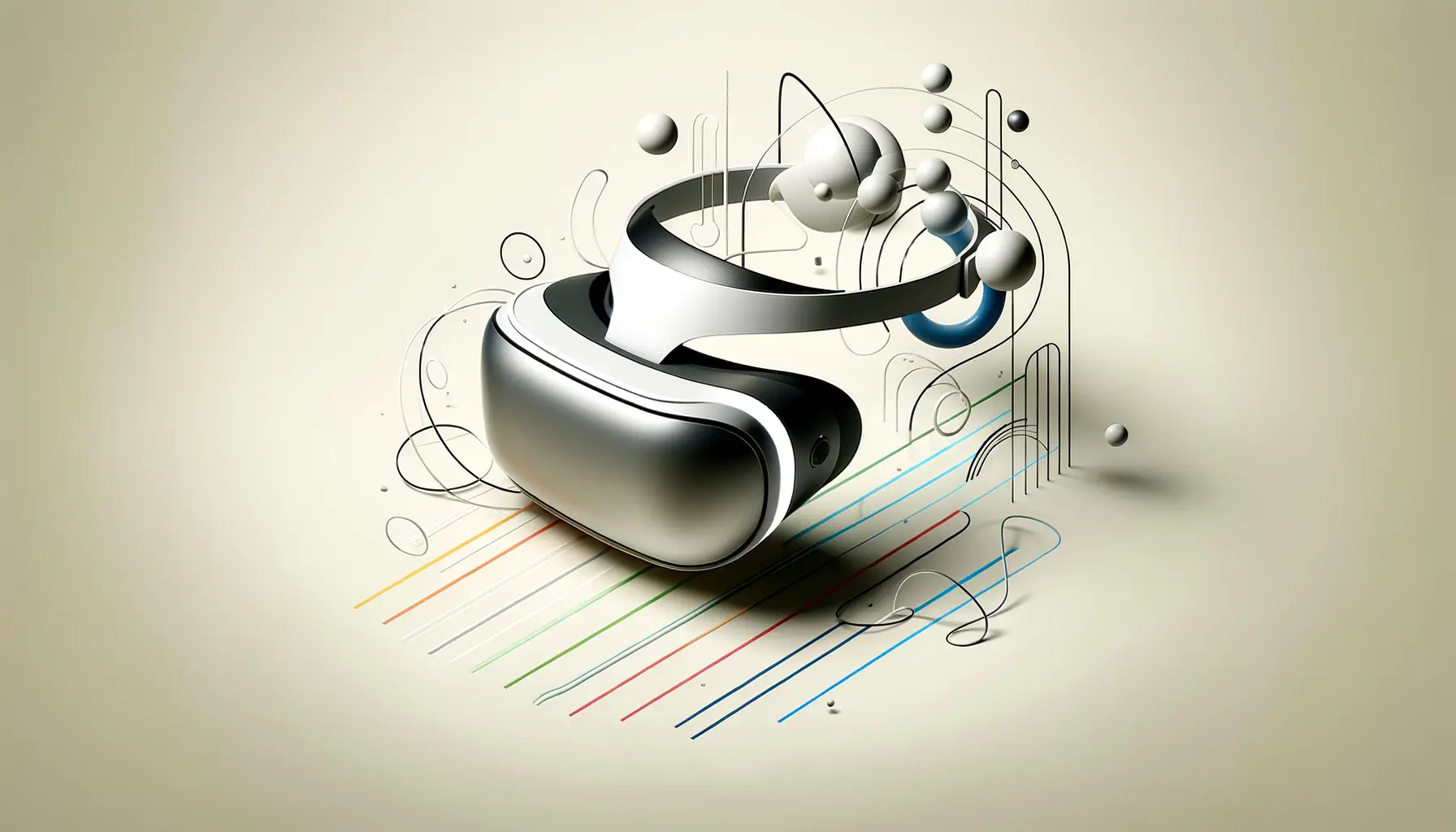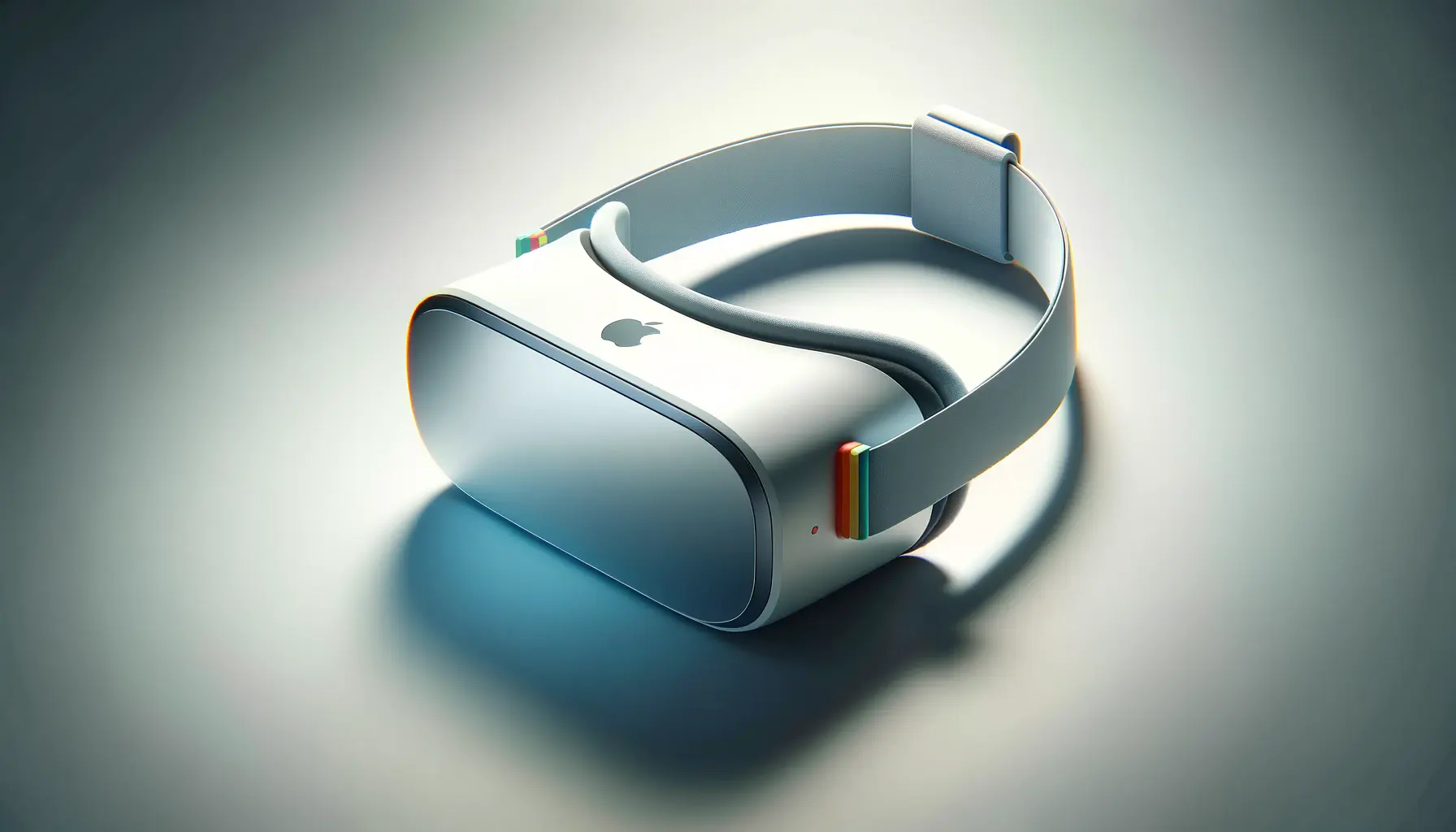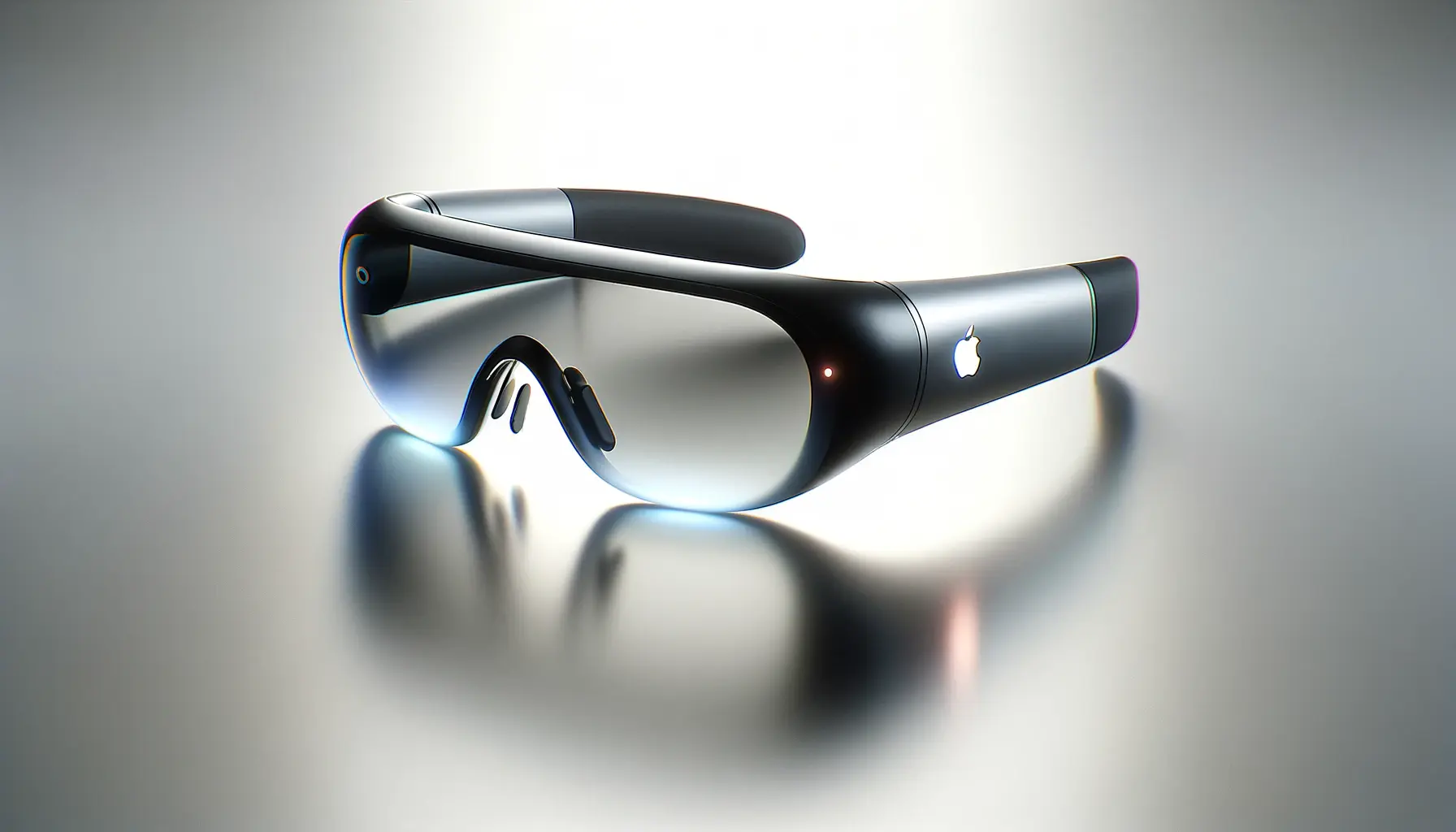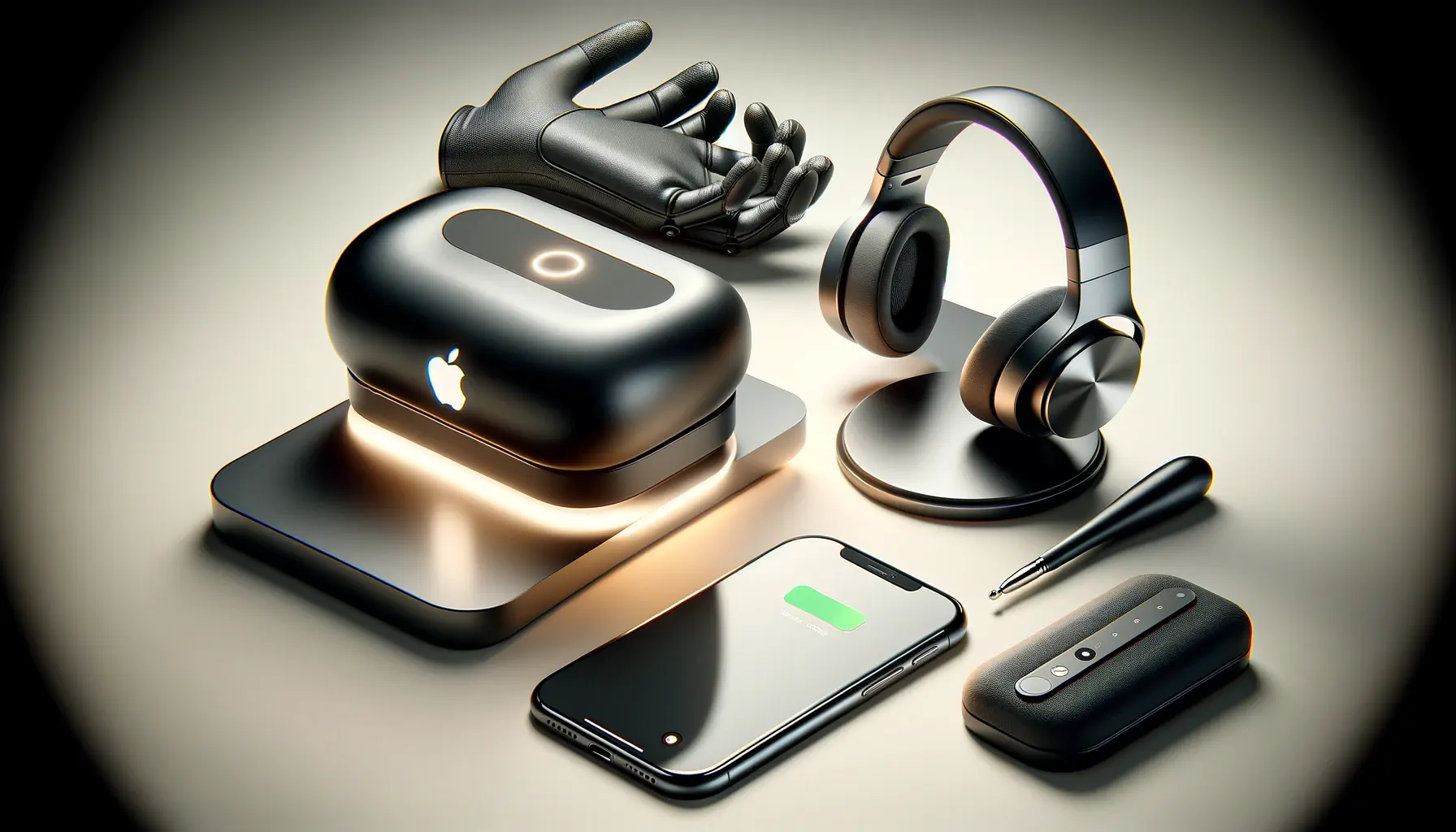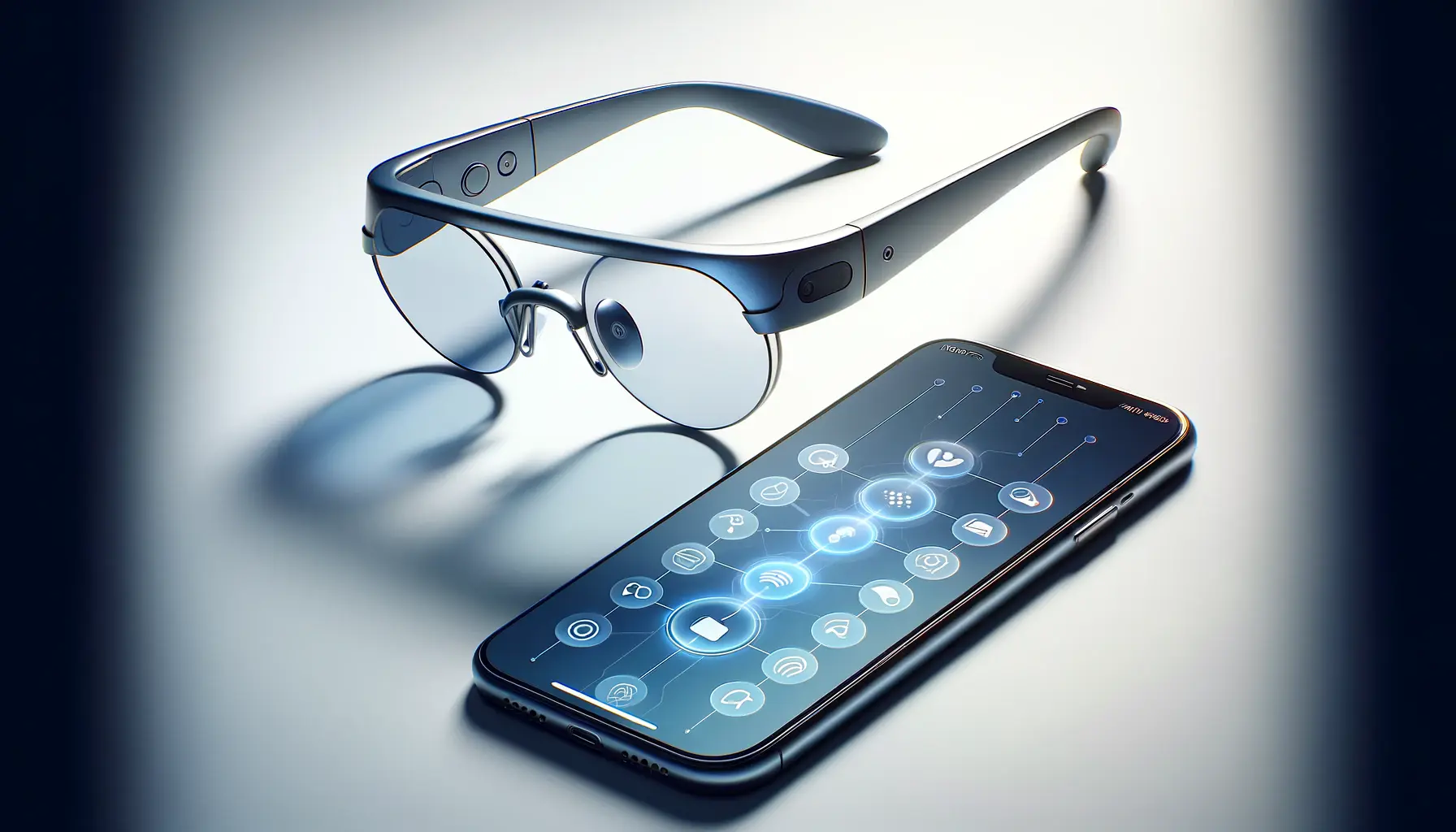The dawn of spatial computing has arrived, heralded by the introduction of Apple Vision Pro, a device that promises to redefine our interaction with digital environments.
This groundbreaking technology merges the physical and digital worlds in ways previously confined to science fiction, offering users an unparalleled immersive experience.
Apple Vision Pro is not just a new product; it’s a bold step into a future where the boundaries between reality and virtuality blur, creating endless possibilities for work, entertainment, and social interaction.
At its core, spatial computing allows for the manipulation of digital objects within a three-dimensional space, as if they were physical entities.
This capability is made possible through advanced sensors, display technologies, and computing power, all encapsulated in the sleek design of the Apple Vision Pro.
The device’s introduction marks a significant milestone in computing, inviting both excitement and curiosity about its potential impact on everyday life and industries far and wide.
Spatial Computing
The Fundamentals of Spatial Computing
Spatial computing represents a paradigm shift in how we interact with digital content.
Unlike traditional computing, which confines users to two-dimensional screens and input devices, spatial computing leverages the space around us as a canvas.
This approach integrates augmented reality (AR), virtual reality (VR), and mixed reality (MR) technologies to create immersive experiences that blend the real with the virtual.
Apple Vision Pro, as a spatial computer, embodies this integration, offering a seamless interface for navigating both physical and digital realms.
The technology behind Apple Vision Pro is designed to recognize and respond to user movements, gestures, and interactions in real-time.
This responsiveness not only enhances user engagement but also opens up new avenues for creativity, productivity, and entertainment.
By breaking down the barriers between users and digital content, spatial computing fosters a more intuitive and natural way of interacting with technology.
Applications and Implications
The applications of spatial computing are as diverse as they are transformative.
In education, for example, Apple Vision Pro can bring complex concepts to life, allowing students to explore virtual models of the human body, historical sites, or the far reaches of the universe.
For professionals, spatial computing can revolutionize design and engineering, enabling the manipulation of 3D models with unprecedented precision and ease.
Moreover, the entertainment industry stands to benefit immensely from spatial computing.
Apple Vision Pro can transport users into immersive gaming environments or cinematic experiences that were previously unimaginable.
This level of immersion could redefine storytelling and audience engagement, offering creators new ways to captivate and inspire.
Spatial computing with Apple Vision Pro is not just about technology; it’s about creating deeper, more meaningful connections between the digital and physical worlds.
The Technology Behind Apple Vision Pro
The Apple Vision Pro stands as a testament to Apple’s commitment to innovation, integrating several cutting-edge technologies to bring spatial computing to life.
At the heart of this device is a sophisticated blend of hardware and software, designed to deliver a seamless and intuitive user experience.
Understanding the components that make up the Apple Vision Pro is essential to appreciating its potential to transform our digital interactions.
Advanced Display Technologies
The display technology of Apple Vision Pro is a marvel of engineering, offering crystal-clear images that seamlessly integrate with the user’s physical environment.
Utilizing a high-resolution, immersive screen, the device ensures that virtual objects appear as tangible as their real-world counterparts.
This level of clarity and immersion is achieved through the use of:
- Retina Display: Ensuring sharp, vibrant visuals that maintain their integrity from any viewing angle.
- Adaptive Refresh Rate: Optimizing the display’s performance for both static images and dynamic content, enhancing the user experience.
Sophisticated Sensing and Tracking
To achieve a truly immersive spatial computing experience, Apple Vision Pro incorporates advanced sensing and tracking technologies.
These systems allow the device to understand and interact with the user’s environment in real-time.
Key components include:
- LiDAR Scanner: For precise depth mapping and spatial awareness, enabling accurate placement of virtual objects in the real world.
- Motion Sensors: Including accelerometers and gyroscopes, which track the user’s movements with high precision, ensuring a fluid and responsive experience.
Powerful Computing Capabilities
At its core, the Apple Vision Pro is powered by a custom-designed chip that balances high performance with energy efficiency.
This processor enables the device to handle complex computations required for spatial computing, such as:
- Real-time rendering of 3D graphics, ensuring smooth and lifelike animations.
- Advanced machine learning algorithms, which adapt and respond to the user’s habits and preferences.
The integration of these technologies in Apple Vision Pro not only sets a new standard for spatial computing devices but also highlights Apple’s role in pushing the boundaries of what’s possible in digital interaction.
Impact on Entertainment and Media
The advent of Apple Vision Pro is poised to revolutionize the entertainment and media landscapes, offering unprecedented immersive experiences that blur the line between content and reality.
This transformation is not limited to just gaming or virtual reality experiences; it extends to movies, live events, and even social media, reshaping how we consume, interact with, and perceive digital content.
At the forefront of this revolution is the device’s ability to deliver highly immersive, interactive content that engages the senses in novel ways.
The implications for various forms of entertainment and media include:
Gaming Evolution
The gaming industry stands to be one of the primary beneficiaries of spatial computing technology.
Apple Vision Pro introduces a new dimension to gaming, where players are not just controlling a character on a screen but are fully immersed in the game’s environment.
This immersion is achieved through:
- Enhanced realism, with 3D environments that players can navigate naturally.
- Interactive gameplay, where physical actions translate into in-game movements, offering a more engaging experience.
Revolutionizing Film and Television
Spatial computing also promises to transform the film and television industries by introducing new ways to experience content.
With Apple Vision Pro, viewers can step into the story, exploring the narrative space as if they were part of the scene.
This could lead to:
- New storytelling techniques, where the audience has the freedom to explore different aspects of the narrative at their own pace.
- Enhanced emotional engagement, as viewers are not just observers but participants in the story.
Live Events and Performances
Live events and performances can also benefit from the capabilities of Apple Vision Pro.
Spatial computing can bring concerts, theater productions, and sports events into the viewer’s living room, offering a sense of presence that traditional broadcasting methods cannot match.
Key benefits include:
- Personalized viewing angles, allowing users to choose their perspective of the event.
- Interactive features, such as accessing additional information about performers or athletes with a simple gesture.
The impact of Apple Vision Pro on entertainment and media is a testament to the device’s potential to not just change how we view content but to fundamentally alter our experiences and expectations of digital engagement.
Revolutionizing Work and Productivity
The introduction of Apple Vision Pro into the market heralds a new era for work environments and productivity strategies.
By leveraging spatial computing, professionals across various industries can experience enhanced efficiency, collaboration, and creativity.
This shift is not merely about adopting new technology; it’s about reimagining the workspace and how tasks are performed.
Spatial computing allows for a more intuitive interaction with digital tools and resources, transforming mundane tasks into engaging experiences.
The implications for work and productivity include:
Enhanced Collaboration
Apple Vision Pro facilitates a new level of collaboration among teams, regardless of their physical location.
By creating shared virtual spaces, team members can work together on projects as if they were in the same room.
This capability is particularly beneficial for:
- Design and engineering, where 3D models can be manipulated and reviewed in real-time.
- Education and training, enabling interactive learning experiences that can be accessed from anywhere.
Streamlining Design and Creativity
The device’s spatial computing power offers unparalleled tools for designers, architects, and creatives, transforming how ideas are conceptualized and realized.
With Apple Vision Pro, users can:
- Interact with their designs in a fully immersive 3D space, enhancing precision and understanding.
- Experiment with layouts, colors, and materials in real-time, speeding up the design process.
Improving Remote Work
As remote work becomes increasingly prevalent, Apple Vision Pro provides a solution to some of its challenges, such as the lack of personal interaction and the difficulty of sharing complex ideas.
Spatial computing can bridge these gaps by:
- Offering a more immersive and interactive meeting experience, making remote participants feel like they’re in the same room.
- Allowing for the visualization of data and concepts in three dimensions, facilitating clearer communication.
The revolution in work and productivity brought about by Apple Vision Pro and spatial computing is not just about doing things differently; it’s about doing things better, with more creativity, efficiency, and collaboration.
Educational Transformation
The integration of Apple Vision Pro into educational settings promises to transform traditional learning paradigms, making education more interactive, engaging, and effective.
Spatial computing opens up new avenues for exploration and understanding, allowing students and educators to transcend the limitations of textbooks and classroom walls.
This technological leap forward offers a glimpse into the future of education, where learning is not just about absorbing information but experiencing it.
By harnessing the power of spatial computing, educational content can be brought to life in ways that were previously unimaginable.
The impact on education includes:
Interactive Learning Experiences
With Apple Vision Pro, students can dive into immersive learning environments that make complex concepts easier to grasp.
For instance, biology students can explore the human body in 3D, walking through the circulatory system or examining the structure of a cell from the inside.
This hands-on approach to learning can significantly enhance comprehension and retention.
Benefits include:
- Increased engagement and motivation among students.
- Improved understanding of spatial relationships and complex structures.
Global Classroom Opportunities
Spatial computing also breaks down geographical barriers, creating a global classroom where students from around the world can learn together.
Through virtual field trips, learners can explore historical sites, natural wonders, and cultural landmarks without leaving their classroom.
This global perspective enriches the educational experience, promoting cultural understanding and empathy.
Key advantages are:
- Access to diverse educational resources and perspectives.
- Opportunities for cross-cultural collaboration and exchange.
Enhanced Special Education Support
Apple Vision Pro offers unique opportunities for supporting special education.
Spatial computing can be tailored to meet the needs of learners with disabilities, providing customizable and accessible learning tools.
For example, students with visual impairments can interact with tactile and auditory-based virtual environments, while those with mobility challenges can explore virtual spaces without physical limitations.
The potential benefits include:
- Personalized learning experiences that cater to individual needs and abilities.
- Increased independence and confidence among learners with disabilities.
The educational transformation ushered in by Apple Vision Pro and spatial computing is a testament to the power of technology to not only enhance learning but to make it more inclusive, accessible, and boundless.
Healthcare Innovations
The Apple Vision Pro is set to revolutionize the healthcare industry by introducing spatial computing into various medical practices and patient care strategies.
This technology offers new ways to diagnose, treat, and manage health conditions, making healthcare more efficient, personalized, and accessible.
The implications for patient care, medical education, and health management are profound, promising to enhance the quality of life for individuals around the globe.
Spatial computing in healthcare opens up a world of possibilities, from advanced surgical simulations to patient education and remote care.
The key areas of impact include:
Advanced Surgical Training and Planning
Apple Vision Pro enables medical professionals to engage in highly realistic surgical simulations, offering a safe environment for practicing complex procedures.
This technology can also be used for pre-operative planning, allowing surgeons to explore a 3D model of the patient’s anatomy to devise the best surgical approach.
Benefits include:
- Reduced risk of complications during actual surgeries.
- Enhanced surgical precision and patient outcomes.
Improved Patient Education and Engagement
With spatial computing, patients can gain a better understanding of their health conditions and treatment options.
Apple Vision Pro can visualize medical conditions in 3D, helping patients visualize and comprehend complex medical information.
This can lead to:
- Increased patient engagement and compliance with treatment plans.
- Improved communication between patients and healthcare providers.
Remote Patient Monitoring and Care
The capabilities of Apple Vision Pro extend to remote patient monitoring and care, offering a new level of convenience and accessibility.
Healthcare providers can use spatial computing to conduct virtual home visits, assess patient conditions, and provide real-time guidance and support.
This approach can significantly benefit:
- Patients with mobility issues or those living in remote areas.
- Healthcare systems by reducing the need for in-person visits and hospital readmissions.
The integration of Apple Vision Pro and spatial computing into healthcare represents a significant leap forward, offering innovative solutions for medical training, patient education, and remote care that promise to improve health outcomes and patient experiences.
Future of Spatial Computing
The journey of spatial computing is just beginning, with Apple Vision Pro leading the charge towards a future where digital and physical realms are seamlessly integrated.
As we look ahead, the potential applications and advancements in this field are bound to expand, driven by continuous innovation and the evolving needs of society.
The implications of spatial computing extend far beyond the current applications, promising to reshape our world in ways we are only beginning to imagine.
The future of spatial computing holds exciting prospects for further integration into daily life, enhancing personal and professional activities with greater interactivity and efficiency.
The evolution of this technology is likely to follow several key trends:
Widespread Adoption Across Industries
While we’ve explored the impact of Apple Vision Pro in entertainment, education, work, and healthcare, spatial computing is set to permeate many other sectors.
From retail and real estate to transportation and tourism, the applications are vast and varied.
As the technology matures, we can expect to see:
- More immersive and personalized customer experiences.
- Enhanced operational efficiency and decision-making through spatial data analysis.
Enhanced Interconnectivity and Collaboration
The future of spatial computing also promises to enhance how we connect and collaborate, breaking down geographical and language barriers.
With advancements in real-time translation and virtual presence technologies, spatial computing will enable more effective global communication and teamwork.
This will lead to:
- More inclusive and diverse collaboration opportunities.
- Greater innovation as ideas are shared and developed across cultures and disciplines.
Continued Technological Advancements
As hardware and software continue to evolve, the capabilities of spatial computing devices like Apple Vision Pro will expand.
Future developments may include more intuitive user interfaces, enhanced sensory feedback (such as haptic and olfactory), and even deeper integration with AI and machine learning.
These advancements will further blur the lines between digital and physical, creating:
- More natural and engaging user experiences.
- New forms of content and interaction that are currently unimaginable.
The trajectory of spatial computing, propelled by innovations like Apple Vision Pro, is set to redefine our relationship with technology. As we venture into this uncharted territory, the possibilities for enhancing human capabilities and enriching lives are limitless.
Embracing the Spatial Computing Era
The unveiling of Apple Vision Pro marks a pivotal moment in the evolution of technology, ushering in the era of spatial computing with profound implications across all facets of life.
This journey into spatial computing is not merely about the advancement of technology; it’s about redefining human interaction with the digital world.
As we have explored, the impact of Apple Vision Pro spans various sectors, including entertainment, education, work, healthcare, and beyond, showcasing the versatility and transformative potential of spatial computing.
The Catalyst for Change
Apple Vision Pro serves as a catalyst for change, challenging conventional boundaries and encouraging innovation.
By blending the digital with the physical, spatial computing allows for more natural, intuitive interactions, fostering a deeper connection between humans and technology.
This shift towards more immersive experiences promises to enhance our capabilities, expand our horizons, and improve the quality of life in unprecedented ways.
Future Prospects and Challenges
As we look to the future, the trajectory of spatial computing is incredibly promising, filled with endless possibilities and opportunities for further exploration.
However, this journey is not without its challenges.
Issues such as privacy, security, and the digital divide must be addressed to ensure that the benefits of spatial computing are accessible to all.
Moreover, as the technology continues to evolve, so too will the need for ethical considerations and guidelines to navigate the complex interplay between the digital and physical realms.
- Widespread adoption and integration into daily life
- Continued innovation and technological advancements
- Addressing ethical, privacy, and accessibility concerns
In conclusion, the Apple Vision Pro and the broader movement towards spatial computing represent a significant leap forward in our relationship with technology.
By harnessing the power of spatial computing, we can unlock new dimensions of interaction, creativity, and understanding.
As we embrace this new era, the potential for positive change is immense, promising a future where the boundaries between the real and the virtual are seamlessly intertwined.
If you're seeking expertise in Apple Search Ads campaigns, visit our service page for professional management!
Apple Vision Pro Spatial Computing FAQs
Explore the most common inquiries about the revolutionary Apple Vision Pro and its spatial computing capabilities.
Apple Vision Pro is a groundbreaking spatial computer that integrates digital content with your physical environment, navigable via eyes, hands, and voice.
No, Apple Vision Pro is defined as a spatial computer, offering more than VR by blending digital content with real-world environments.
It uses advanced sensors, cameras, and spatial computing technology to project digital content into the physical space, creating immersive experiences.
From immersive gaming and educational tools to professional design and remote collaboration, Apple Vision Pro offers a wide range of applications.
It transforms learning by creating interactive, 3D educational experiences that make complex concepts easier to understand and engage with.
Yes, it revolutionizes workspaces with tools for 3D design, virtual meetings, and collaborative projects, enhancing productivity and creativity.
It offers innovative solutions for medical training, patient education, and remote care, improving outcomes and patient engagement.
The future is bright, with potential for wider adoption across industries, enhanced global collaboration, and continuous technological advancements.
